We had a crop of pumpkins surprise us in the yard this summer. Most of them, somewhat inconveniently, grew under the Whitespire Birch tree we planted last year. This made finding the pumpkins an interesting game, and we had to improvise a trellis to keep the vines off the grass so the pumpkins wouldn’t rot.

Another volunteer pumpkin plant took root in the bottom terrace in our front yard. Another in the top terrace. One more took root in the boulevard strip between the sidewalk and the street.
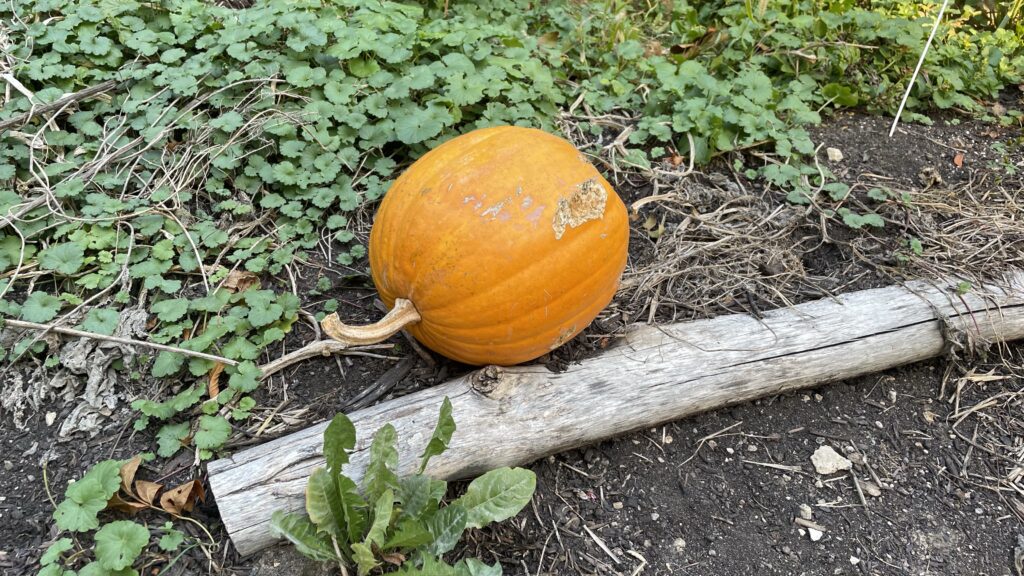
Finally, we found a volunteer growing up the outside of our fence. This was the largest of six full size pumpkins we harvested from the yard. There were also another twenty or so tiny decorative pumpkins.

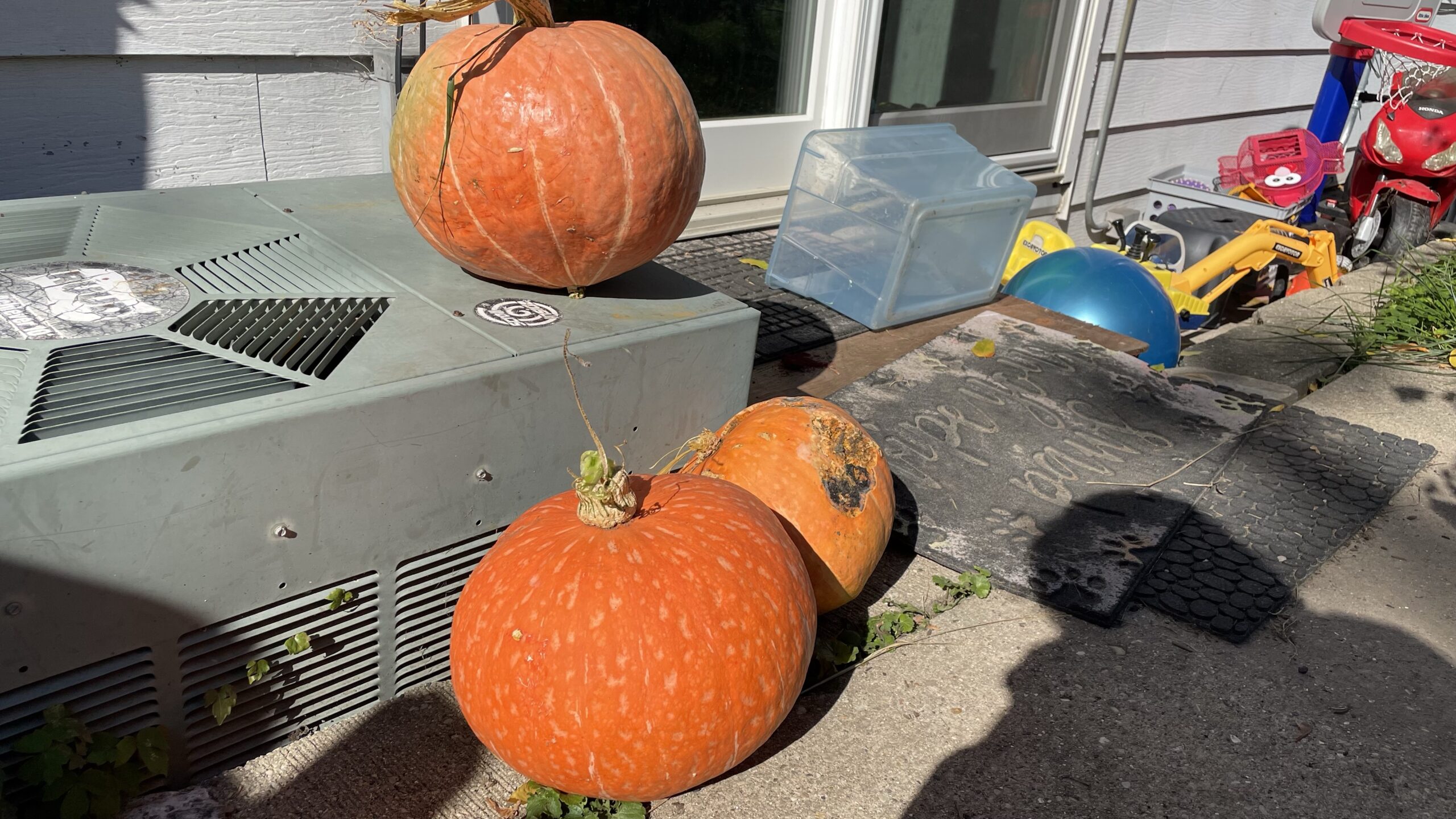
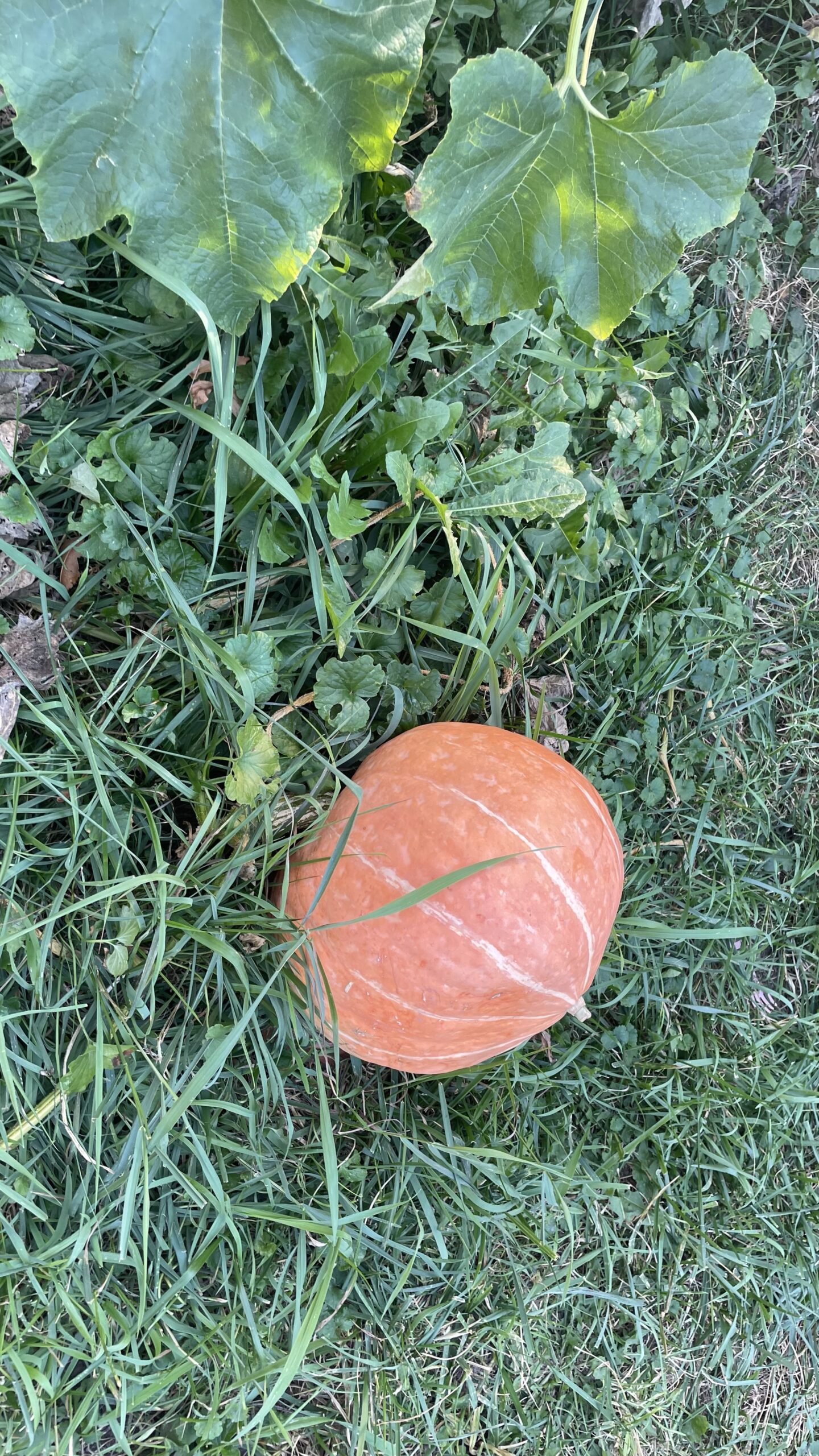
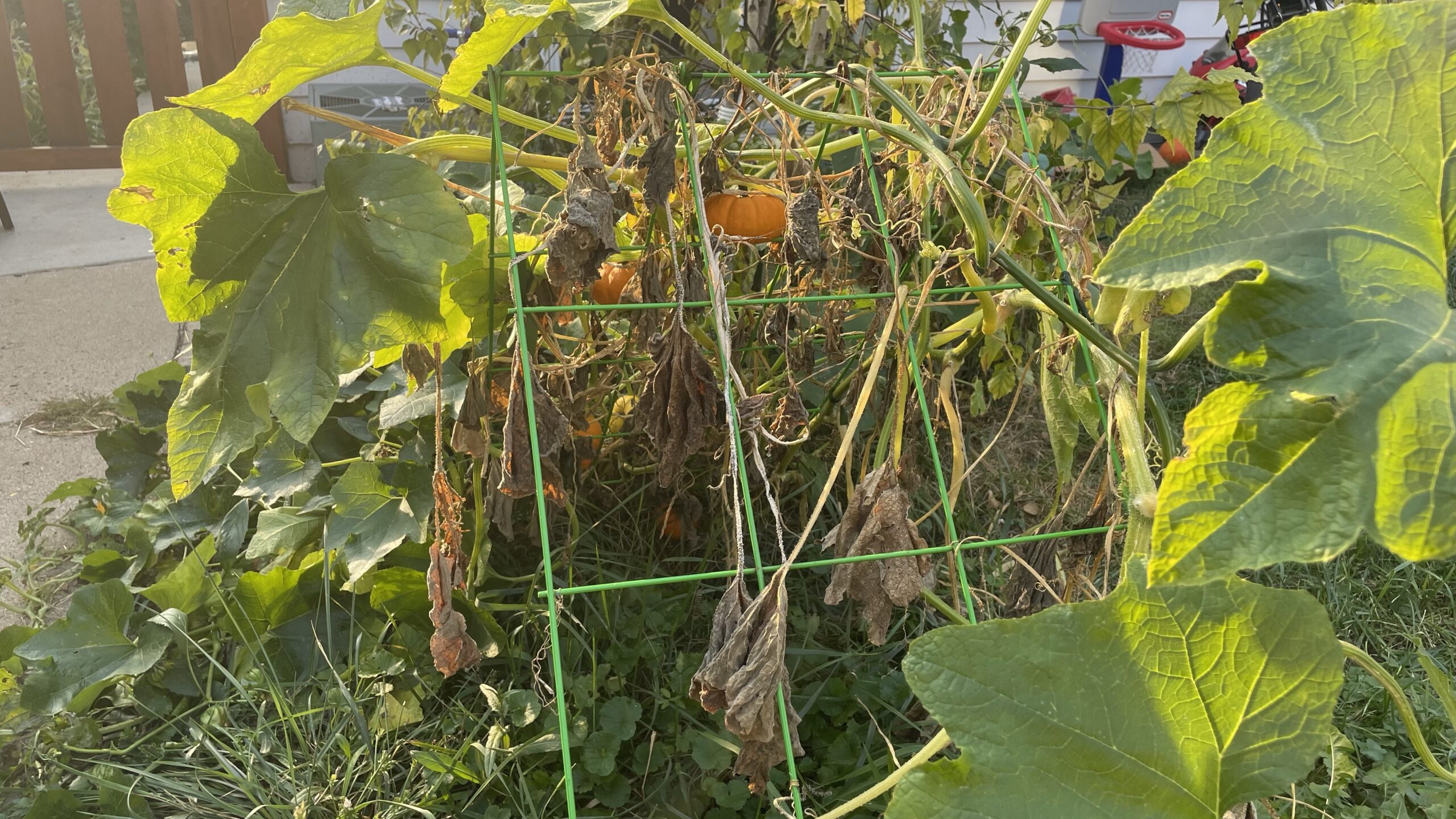
So what do you do when you have a ton of pumpkins? One of these larger pumpkins turned into a jack-o-lantern, some were painted, but after Halloween we had one large pumpkin and several smaller ones remain. These were turned into about two gallons of pumpkin purée.
Making pumpkin purée is pretty easy, and you only need one or two small (2.5 – 5 pounds) pumpkins for a pie. The technique is pretty straightforward. I followed the Pioneer Woman’s guide. I gutted the pumpkins, then cut them into about ten pieces each, and roasted them for about an hour. No oil, no spices, just roasted pumpkin.
They were pretty easy to get off the sheet. The skin came away from the meat easier on the smaller pumpkins, which wasn’t terribly surprising. One pumpkin was a bit underripe and appeared to have a lot of meat but after roasting, very little was usable. I was surprised by how well all of these different pumpkins processed together.
For the pie, I improvised a bit with the filling while the crust blind baked. I roughly followed this recipe from Cooks Illustrated, which produced a really delicious crust. I think I could have blind baked it longer because the crust wasn’t quite as crispy as I’d like. I get a bit nervous blind baking because I can’t see what’s going on under the weights. Still, it wasn’t soggy or doughy, and the crowd approved so I’m calling it a win.
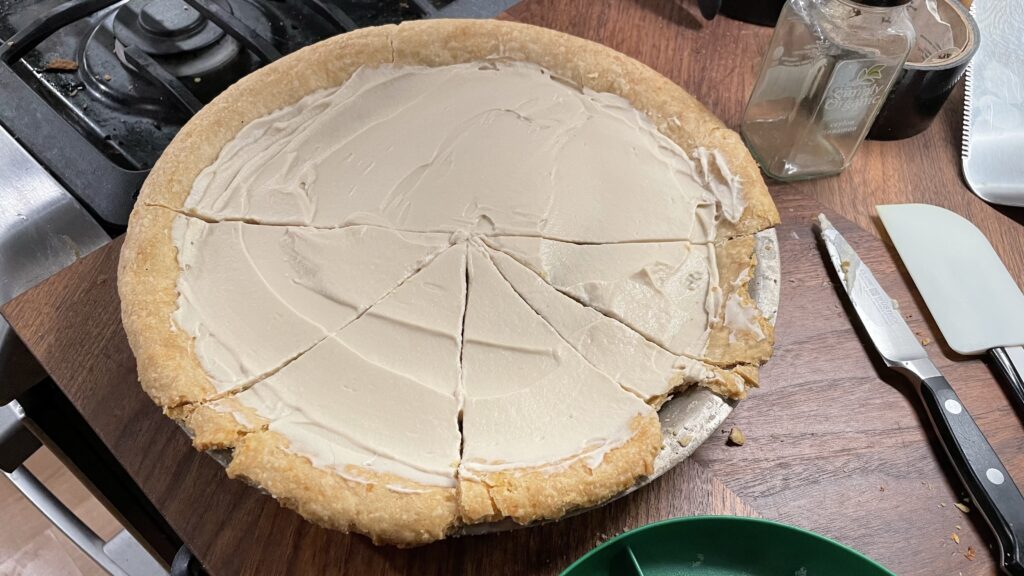
I have an intolerance to nutmeg — as far as I can tell it’s the spice in “spiced” things that gives me migraines. So I omitted nutmeg in favor of cardamom. I think this ended up bringing a nice rich taste to the filling. I was also low on cinnamon and tried to grind up a cinnamon stick into a powdery consistency. I didn’t think it through very well but still can’t say I recommend doing this with a food processor. Maybe if you had a burr spice grinder you could do it better As a result, pie ended up with big chunks of mushy cinnamon stick floating around. It was not a pleasant mouthfeel.

One thing I may try again in the future is steeping cinnamon sticks in the pie filling over low heat. The cinnamon flavor the sticks imparted on the pie was pretty interesting, more present than past pies I’ve made. Needs more experimentation for sure.
My final divergence from the recipe was adding the egg to the mix cold and whisking it while keeping it under low heat. This worked well, and it’s probably how I’d do it if I were steeping the cinnamon sticks. You have to whisk nearly constantly at the beginning to avoid scrambling the egg. Following the brief probably would have been easier on the arms.

Finally, I tied something a little different for the whipped cream. We don’t like our whipped cream too sweet, but we do like it to have a strong vanilla flavor. I used equal parts sugar and vanilla (3T each) in about a cup of cream. This gave the cream a unique brownish color, and a really rich flavor without being too sweet. I’ll definitely do this again.
This first pie was made from the meat of the largest pumpkin I processed. Most of the recipes recommend using smaller pumpkins, so I was curious to see if there was noticeably less flavor in the purée from a larger fruit. The prepared filling had a bit lighter color than you might expect, and the purée itself was yellower than what you might get from a can. Still, the pie had plenty of the pumpkin flavor and aroma I expected a pie to have.
Making pie from your own pumpkin purée: 10/10, can’t wait to do again.
Volunteer pumpkins in your garden: 10/10, hope we get more next year.
